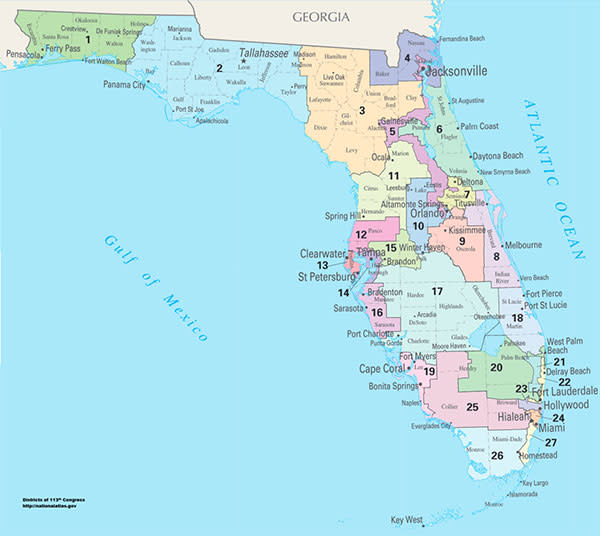How Will Redrawing Congressional Districts Affect the 2016 Election?

Earlier this month, Florida’s Supreme Court ruled that the Florida Legislature failed to comply with the constitution’s Fair District Amendments when crafting congressional districts. The court invalidated eight of the state’s 27 districts and provided the legislature with specific instructions for redrawing them. They will have 100 days to do so. The anticipated changes will likely have rippling effects through the majority of the remaining districts, as border changes in one district require changes in those around it. There is another case pending that deals with the legislature’s Senate districts--and given the corrupt process that was uncovered in the congressional district case, it is highly likely that the Senate districts will need to be redrawn, as well.
Most of the media speculation in the wake of the court’s decision has focused on the anticipated consequences for election races in 2016. These consequences are already manifesting in the Tampa-St. Pete area as Congressman Dave Jolly announced that he will vacate his seat (which will likely incorporate more registered Democrats and fewer Republicans) in order to run for the Senate. Charlie Crist has also expressed interest in running for an open seat.
The redrawn districts will most certainly impact the 2016 races; whether they result in a significant change in the balance of representation in Washington and/or the balance of power in Tallahassee remains to be seen. But the legislature’s authority to draw the lines in the future may also be in jeopardy. The court stopped short of stripping the legislature’s authority in its latest decision, but refrained from ruling out that option should the legislature continue to pass plans that are ultimately deemed unconstitutional.
More importantly, by explicitly questioning whether or not the legislature can be trusted with their redistricting responsibilities, the court all but invited Florida citizens to take matters into their own hands and pass another constitutional amendment that would establish an independent redistricting commission. At the end of June, the U.S. Supreme Court ruled in favor of a citizens’ ballot initiative that did just this: it stripped redistricting authority from a recalcitrant legislature in Arizona and reassigned it to an independent redistricting commission. The precedent now exists and the timing could not be more fortuitous for Floridians. Litigation has exposed the process by which the legislature violated the 2010 Fair District Amendments mandates. They appear to have done so (and continue to do so) with a sense of impunity. This is to be expected if the court-mandated recourse simply sends the maps back to the legislature and allows them to continue tweaking until they get something approved.
In order to implement the Fair Districts Amendments as they were envisioned, Florida’s citizens will likely need to pass another constitutional amendment that follows in the footsteps of Arizona and establishes an independent redistricting commission. Don’t be surprised to see more calls for such an amendment in the coming months.



